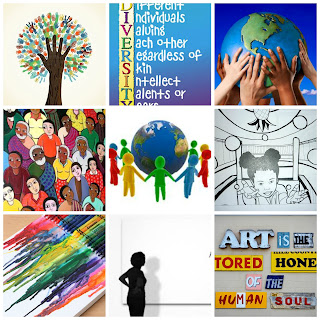
A few years back I was working in a preschool and I was in the 4-5 year old classroom. I had 15 children to a room by myself and I truly enjoyed my students and my job. One day I was working and I had laid out art supplies for my students to do an art project; it was a painting project of some sort. That specific day we had the state come in to watch us; they came in and didn't talk to us but just sat back and observed me and the children and we later got a grade based on our teaching performance and the way we worked with the children. During art, I liked to sit down at the table with my students and I would interact with them, help them with whatever they needed help with and we would have interesting discussions. One of the lady's from the state that was in our classroom that day was heavy set. Out of nowhere; very randomly, one of my students; Eden said out loud "Mrs Stacy, why is that fat lady in our classroom watching us?" Of course the lady heard Eden say that and she just smiled but I was completely embarrassed and I apologized to the lady. The other students in the class thought it was funny so they chuckled why my cheeks were red and I felt bad for the lady. I explained to the class in age appropriate words that there are so many different types of people in the world, some are skinny, some are heavier, some are short, some are tall and some are mean yet some are nice. I explained to them that we should not judge others based on how they look because it's whats on the inside that matters. On the dry erase board I made a drawing and came up with a story to try to explain myself better. I drew a picture of a skinny man and I drew a picture of a "fat" lady. I explained to the children that the skinny man may have been skinny but that he was bad because he did bad things and used bad words. I told them that the man was mean to other people. I pointed to the heavyset woman on the board and I said this lady up here may be "fat" but she says nice words and does nice things for people. She is your friend. I let them know it wasn't nice to call people names because it hurts their feelings and on their faces up on the board I made facial expressions. I had a one on one talk with Eden about how it wasn't nice what she said and it was not acceptable and I asked her to apologize to the lady and she did. I feel like the messages that I communicated to Eden and the rest of my class was that there are many types of people in the world and that all of us are different and that we should accept people for who they are on the inside and not for what they look like. Looks aren't important. "A child's age is one of the most important factors
in considering how to begin a discussion on any subject dealing
with prejudice, discrimination or, more simply, the things that
make people different. The most important thing to keep in mind
is that it is never too early, or too late, to talk to children
about respecting diversity." (LaRosa,2001)
An example of how an anti-bias educator might have responded to support the child's understanding is to come up with other visuals to provide to the class that would better their understanding as children, to give them more examples, read them a story that talks about accepting people regardless of what they look like, create a curriculum that has projects and activities linked to the topic.
Reference:
LaRosa, C. (2001). Talking to your child about hatred and prejudice. Retrieved from http://archive.adl.org/issue_education/hateprejudice/Prejudice3.asp






